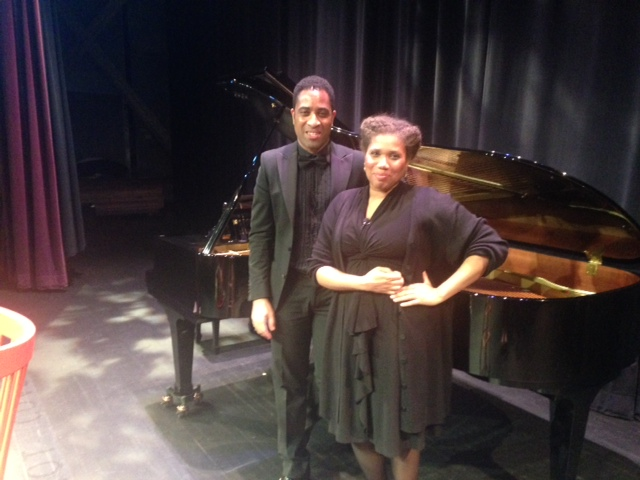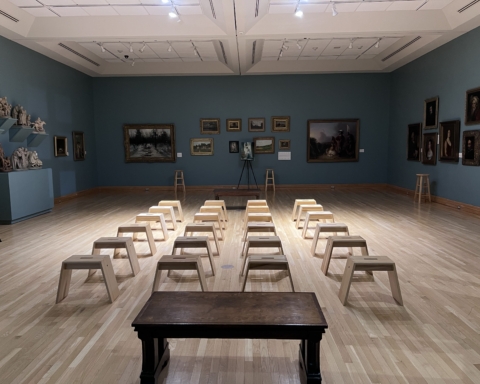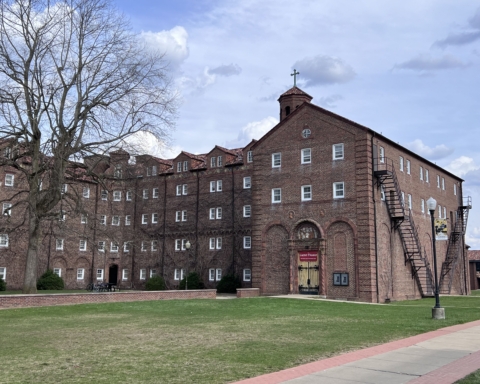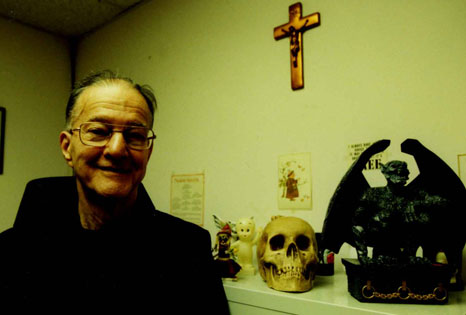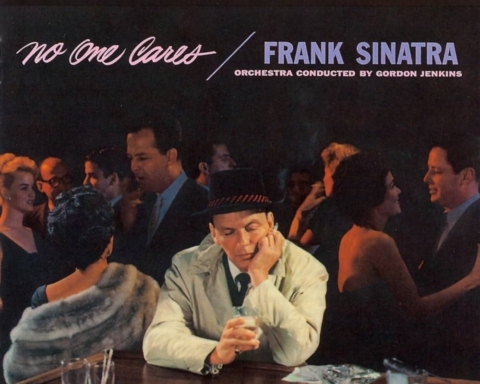By Alexandra Salerno
Advisory Editor
“And ain’t I a woman? I have borne thirteen children, and seen most all sold off to slavery, and when I cried out with my mother’s grief, none but Jesus heard me! And ain’t I a woman?”
The famous words, spoken by former slave and human rights advocate Sojourner Truth in 1851 were echoed in the Regina A. Quick Center for the Arts during a one-actress performance on Tuesday, aptly titled “Ain’t I A Woman!”
The performance followed actress Christy Hall as she played four African-American women from different backgrounds and education at different points in United States’ civil rights history. Hall, who has performed in the off-Broadway show “Marie Christine” and also currently performs standup in New York City, mesmerized as she portrayed four very different characters with few costume changes and virtually no set.
Despite being the only actress, however, Hall was not alone on stage. She was accompanied by Byron Sean, a classically trained pianist who studied at the Royal Academy of Music in London. Sean complemented all three acts with an enthusiasm that matched Hall’s acting and singing making the entire performance not just a play, but a true piece of theater that seamlessly incorporated instruments, singing and acting.
The first act featured Hall as Zora Neale Hurston, a Harlem Renaissance author best known for writing “Their Eyes Were Watching God.” Hall’s monologue for this scene included a recounting of what Hurston called “her first Jim Crowe experience” where she was discriminated against in a doctor’s office in New York City.
“Zora is most definitely my most challenging character,” Hall said in a talk following the performance. “She’s very brazen.”
During each monologue, Sean accompanied Hall with various piano pieces culminating each act with solo interludes before Hall became a new character.
“(Ain’t I a Woman!) is written in a way that makes it easier to quickly change persona,” Hall said.
The second act saw Hall emerge as Clementine Hunter who was born in 1886 as the child of former slaves who became a famous painter. Despite both being influential African-American women, Hunter’s story starkly contrasted with Hurston because of their difference in education (Hunter was illiterate) and setting. Hunter’s story of discrimination included not being permitted to see her paintings displayed in a university gallery until after hours because of her skin color.
The final act involved two separate characters, including Sojourner Truth who gave the speech for which the performance is named. The second, and perhaps most heart-wrenching character in the show, was Fannie Lou Hamer’s, a civil rights activist who encouraged women to vote and was subsequently fired from her job, kicked off of the plantation where she lived for 20 years, arrested and beaten so badly by police that she suffered permanent kidney damage.
“I hope to promote awareness,” Hall said about her portrayal of the four African-American figures. “It’s so easy to forget the facts of history because it is behind you, but I want to give (viewers) an awareness to take into the rest of the world.”
The awareness brought to St. Bonaventure was made possible by the collaborative efforts of St. Bonaventure’s Diversity Action Committee, women’s studies program, the Damietta Center and Clare College.
Alva Cellini, director of the women’s studies program, said when she was first contacted by the producers of “Ain’t I a Woman!,” she didn’t believe it would be possible to bring the performance to St. Bonaventure because of funding. It was through the help of all departments involved who worked together to contribute that the free event for students and community members went forward.
“(“Ain’t I a Woman!”) is something you don’t see everyday,” Cellini said. “The pianist had so much experience, and the actress was amazing in changing characters to move the performance along nicely. It wasn’t boring. Sometimes you go to performances like this, and they are so boring, but this was fantastic with the music, interludes and character changes.”
For pianist Sean, he hopes audiences find true value in the meaning behind the entire performance.
“It’s not simply to entertain or make people laugh, but remind them that this was 50 or 60 years ago, and there are people who watch our shows that actually remember this,” he said. “I want to make people think about that.”
Cellini credits Sean and Hall for the success of the event, which was attended by a combination of campus and community members.
“It is really a credit to their artistic ability,” she said.

